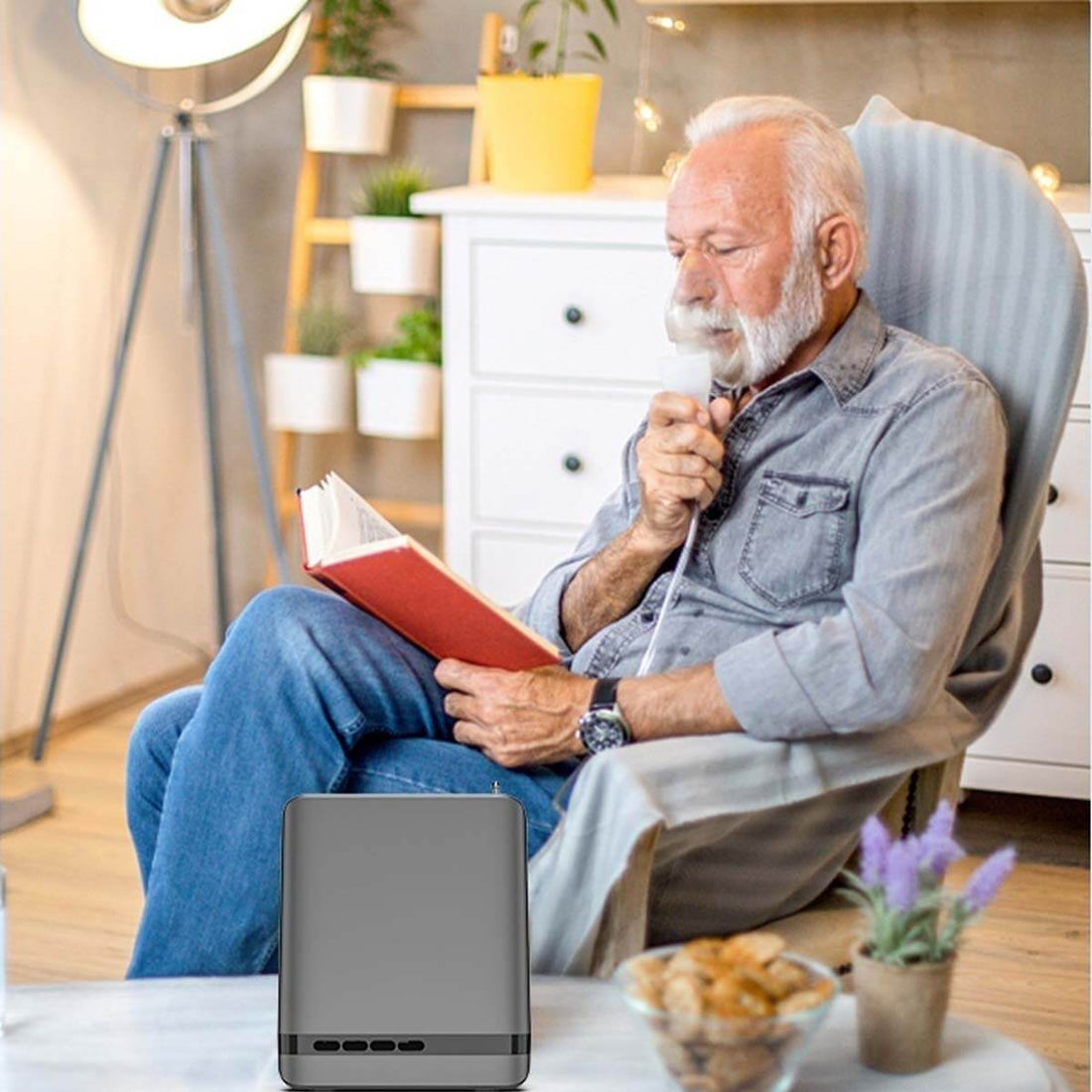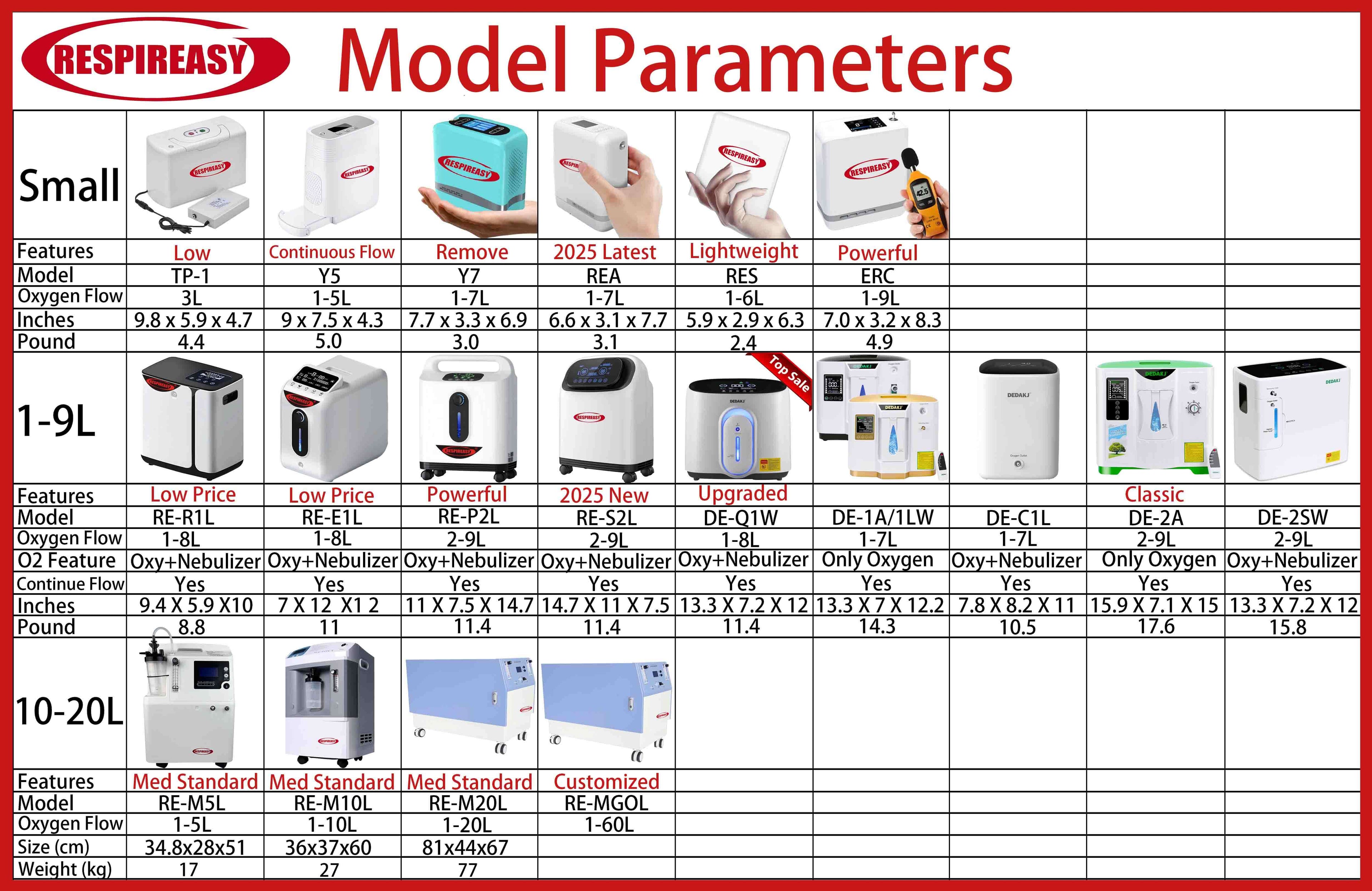
RESPIREASY-DEDAKJ oxygen concentrator daily use guide: safe, scientific and efficient way to use oxygen
RESPIREASY-DEDAKJ Oxygen Concentrator Daily Use Guide: Safe, Scientific and Efficient Ways to Use Oxygen
RESPIREASY In the field of healthcare and home health care, oxygen concentrators are increasingly widely used. Whether it is patients with chronic respiratory diseases or people who pursue a healthy life, they may use it. However, only by mastering the correct use method can the oxygen concentrator be ensured to play the best role and ensure safety. The following details the daily use points of the oxygen concentrator from the aspects of pre-use preparation, use process, and post-use maintenance.
Home 1-9L oxygen therapy oxygen concentrator

Portable oxygen therapy oxygen concentrator

1-100L Medical oxygen therapy oxygen concentrator

I. Key preparations before use
(I) Environmental selection
The RESPIREASY oxygen concentrator should be placed in a spacious, well-ventilated room, at least 15-20 cm away from obstacles such as walls and furniture, to ensure smooth air circulation and facilitate heat dissipation of the machine. At the same time, stay away from open flames, heat sources (such as radiators, electric heaters) and flammable items, because oxygen is combustible. If there is a fire source around, it may cause a fire or even an explosion. In addition, the room should be kept clean and dry, avoiding a humid and dusty environment to prevent dust from entering the oxygen concentrator and affecting the performance and service life of the machine.
(II) Machine inspection
Before using RESPIREASY, be sure to carefully check whether all parts of the oxygen concentrator are complete and intact. Check whether the power cord is damaged and whether there are exposed wires to prevent the risk of leakage; check whether the oxygen inhalation tube is unobstructed, whether it is folded or blocked. If the oxygen inhalation tube is found to be aging or damaged, it should be replaced in time; confirm that the humidification bottle is tightly connected and there is no water leakage, and add an appropriate amount of pure water or distilled water according to the instructions (the water level is generally between the "lowest" and "highest" water level lines of the humidification bottle). The function of the humidification bottle is to moisten the inhaled oxygen and prevent the respiratory mucosa from drying out. For molecular sieve oxygen concentrators, you should also pay attention to the use time of the molecular sieve. When the specified replacement cycle is reached, contact the manufacturer or professional maintenance personnel in time to replace it to ensure the stability of the oxygen concentration.
(III) Parameter setting
RESPIREASY reasonably sets the parameters of the oxygen concentrator according to the specific situation and doctor's advice of the user. Generally speaking, for healthy people to perform oxygen health care, the oxygen flow rate can be set at 1-2 liters/minute, and the oxygen concentration is around 25%-30%; for patients with respiratory diseases such as chronic obstructive pulmonary disease (COPD), the oxygen flow rate is usually 1-3 liters/minute, and the specific details need to be strictly followed by the doctor's advice. At the same time, set the usage time to avoid long-term continuous use. It can be used for 30 minutes to 2 hours each time according to personal tolerance and physical condition.
2. Standardized use process
(I) Correctly wear the oxygen inhalation device
RESPIREASY gently places the nasal plug or mask of the oxygen inhalation tube on the user's nasal cavity or face and adjusts it to a comfortable position. When wearing a nasal plug, make sure that the nasal plug head is of the right size and can fit tightly in the nasal cavity, but not too tight to avoid compressing the nasal mucosa; when wearing a mask, adjust the tightness of the headband so that the edge of the mask fits well with the face, does not leak air, and does not feel tight. Before starting to inhale oxygen, turn on the power switch of the oxygen concentrator first. After the machine runs stably and oxygen is output, wear the oxygen inhalation device. When oxygen inhalation is finished, remove the oxygen inhalation device first and then turn off the power of the oxygen concentrator.
(II) Real-time observation and adjustment
During the process of oxygen inhalation, the user or family members should pay close attention to the operating status of the oxygen concentrator and the user's response. Observe the display screen of the oxygen concentrator to confirm whether the parameters such as oxygen flow and oxygen concentration are stable at the set value; pay attention to the sound of the machine when it is running. If there is abnormal noise or vibration, it may be a machine failure. Stop using it immediately and contact after-sales maintenance. At the same time, pay attention to the user's breathing, complexion, consciousness, etc. If there are symptoms such as shortness of breath, dizziness, nausea, etc., it may be that the oxygen concentration or flow is not appropriate. It is necessary to adjust the parameters in time or stop oxygen inhalation, and consult a doctor.
(III) Precautions for special groups
For the elderly, children or people with limited mobility who use oxygen concentrators, they must be accompanied by a dedicated person to ensure safe use. When used by children, oxygen masks or nasal plugs suitable for children's faces should be selected, and the oxygen flow and time should be controlled to avoid affecting the respiratory tract and physical development of children due to improper oxygen inhalation. Pregnant women should inhale oxygen under the guidance of a doctor, strictly master the indications, concentration and time of oxygen inhalation, and should not inhale oxygen at will to avoid affecting the health of the fetus.
III. Maintenance after use
(I) Cleaning the body
After using the oxygen concentrator, disconnect the power supply first and wait for the body to cool down. Dip a clean soft cloth or sponge in an appropriate amount of neutral detergent (such as detergent diluent), gently wipe the surface of the body to remove dust and stains, then wipe it clean with clean water, and then wipe it dry with a dry cloth. Be careful not to let moisture enter the oxygen concentrator to avoid damaging electronic components. Clean the air filter of the oxygen concentrator regularly (1-2 times a week), which is generally located at the air inlet of the machine. Remove the filter according to the instructions, rinse it with clean water, dry it, and then install it back in place to ensure the air filtration effect and prevent dust and impurities from entering the machine.
(II) Disinfection of parts
Parts that come into direct contact with the human body, such as oxygen tubes and humidifier bottles, need to be disinfected regularly to prevent bacterial growth and respiratory infections. The oxygen tube can be soaked in chlorine-containing disinfectant (diluted according to the instructions) for 30 minutes, then rinsed with clean water and dried for use; the humidifier bottle should be disinfected at least once a week. In addition to soaking in chlorine-containing disinfectant, it can also be mixed with white vinegar and water in a ratio of 1:3, poured into the humidifier bottle and soaked for 30 minutes, and then rinsed with clean water. The disinfected parts must be thoroughly dried before use.
(III) Long-term out-of-use treatment
If the oxygen concentrator needs to be out of use for a long time (more than 1 week), the water in the humidifier bottle should be poured out first, cleaned and dried, and then the oxygen tube, humidifier bottle and other parts should be removed from the oxygen concentrator and stored separately. Disconnect the power supply of the oxygen concentrator, wrap the oxygen concentrator with a dust cover, and place it in a dry, cool, ventilated place to avoid direct sunlight and humid environment. Every 1-2 months, turn on the power and let the oxygen concentrator run for 10-15 minutes to prevent the electronic components inside the machine from being damaged by moisture.
Mastering the daily use of the oxygen concentrator can not only make it better serve health, but also effectively extend the service life of the oxygen concentrator. During use, if there are any questions about the operation and maintenance of the oxygen concentrator, you should promptly consult the product manual or consult the manufacturer's customer service and professional medical staff to ensure safe, scientific and efficient use of oxygen.











